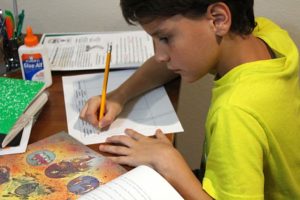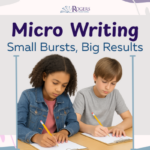** Contact us if you would like Rogers Education Consulting to come to your campus with engaging, evidence-based, and practical professional development **
 I started off this year with teaching folktales, fables, and legends. Eventually, we will get into myths and fairy tales, but not quite yet. Every time it’s time to teach this traditional literature, I get bogged down in trying to define them and separate them, but in truth, they all overlap a little. This year, I decided to teach the subtle differences, but not get caught up in trying to put each story into a specific box.
I started off this year with teaching folktales, fables, and legends. Eventually, we will get into myths and fairy tales, but not quite yet. Every time it’s time to teach this traditional literature, I get bogged down in trying to define them and separate them, but in truth, they all overlap a little. This year, I decided to teach the subtle differences, but not get caught up in trying to put each story into a specific box.
I began by explicitly defining each type of story:
- Folktales – stories that were at one time oral and passed down from generation to generation. Many times there is some sort of partial truth embedded in the story.
- Fables – essentially are a type of folktale. They are imagined stories that teach some sort of moral or lesson.
- Legends – stories that are either completely imagined or based on a half-truth with mystical elements and usually center on a hero.
After describing the types of books we would be reading, I wheeled out (yes, I’m that dramatic – it’s all in the presentation) tons of inviting picture books. I picked up a few to show students. We picture-walked through them to talk about the characteristics that would make it a folktale, fable, or legend. We pointed at magical moments, larger than life characters, and personified animals and objects. Then I allowed students to peruse the books the rest of the time.
The following day we talked about elements of the traditional tale. We reviewed who the main characters would be as well as what setting was. Can you believe they all forgot! Yep, I’m sure you can! It didn’t take long to remind students they had to talk about where and when. This, to me, is really important when we are discussing folktales, fables, and legends. I had checked out so many intriguing books from the library that were from various cultures and countries.
I spent some time and really talked about rising action, climax, and falling action. It was important to me that students realized these main points in the story because, in these tales, the lesson or theme would be right there at the climax. It’s crucial that they understand the climax first. I chose to read Rabbit Wishes by Linda Shute to model for the students. I had already read the book once for enjoyment yesterday, so now we could just do a quick review and reread to teach. I started by explaining the climax. The climax of the story is when the conflict of the plot is resolved. So I reread the story, as I did I modeled for students how to find the conflict. In this story, Rabbit really wants to be bigger. The conflict is that Papa Dios won’t do it and sends Rabbit on a quest that he must accomplish before he will grant his wish. As I continued to read, I stopped every so often a think aloud to students about the problem of the story and if it has been resolved. When we get to the point where the story was resolved, we all jumped! Okay…I jumped first and then it is not hard to convince a bunch of ten-year-olds to jump with you! We found it! We found the resolution to the conflict. We marked the climax on the chart. Then we went back and found the events that lead to the climax, as well as the events that followed the climax.
these main points in the story because, in these tales, the lesson or theme would be right there at the climax. It’s crucial that they understand the climax first. I chose to read Rabbit Wishes by Linda Shute to model for the students. I had already read the book once for enjoyment yesterday, so now we could just do a quick review and reread to teach. I started by explaining the climax. The climax of the story is when the conflict of the plot is resolved. So I reread the story, as I did I modeled for students how to find the conflict. In this story, Rabbit really wants to be bigger. The conflict is that Papa Dios won’t do it and sends Rabbit on a quest that he must accomplish before he will grant his wish. As I continued to read, I stopped every so often a think aloud to students about the problem of the story and if it has been resolved. When we get to the point where the story was resolved, we all jumped! Okay…I jumped first and then it is not hard to convince a bunch of ten-year-olds to jump with you! We found it! We found the resolution to the conflict. We marked the climax on the chart. Then we went back and found the events that lead to the climax, as well as the events that followed the climax.
Students then chose more books from the glorious pile of library books and read their own book and tried to find the climax. As they read, I walked around and conferenced with the students, mostly asking them if they knew what the problem was in their story. Did they have an idea for how it might get solved? If they had completed their story, I asked how the problem was resolved and what the climax was in the story.
The next day, it was time to talk about the moral of the story. In these stories, there is a theme, message, or moral. The good news is that it’s probably tied up in the hard work they did the other day in finding the problem/resolution/climax. In our model story, Rabbit does everything on the quest, so Papa Dios makes him bigger. Well, actually (*spoiler alert*), he just makes Rabbit’s ears bigger! So this story does explain something in nature (why rabbits have long ears) but it also teaches a lesson. As a class, we talked about what we can learn from the events in this story. We all decided that we should be careful what we wish for! Truth.
Students were given an organizer (graphic organizer.docx) and were able to choose a new book to read and fill out the elements.
What is your favorite fable, folktale, or legend?


